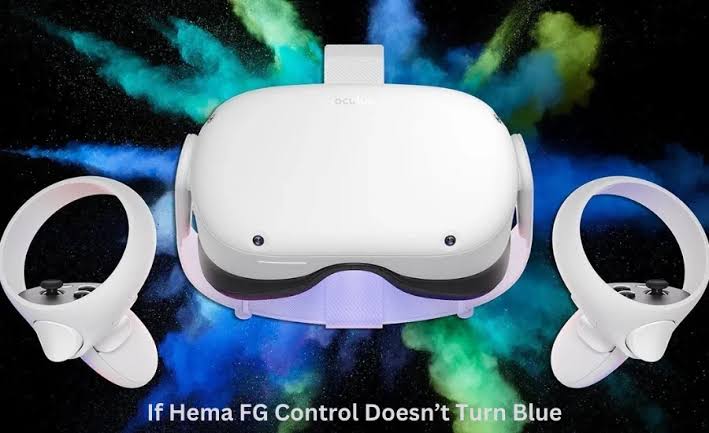Imagine you’re in the lab, ready to run tests with If Hema FG Control Doesn’t Turn Blue. You follow all the steps meticulously, but as you glance at your control, it’s just not turning blue. Panic sets in—what went wrong? This scenario is more common than you might think and can lead to frustration and delays in your work.
Hema FG Control is a vital tool for many laboratory processes. It ensures accuracy and reliability in testing blood samples. However, when it doesn’t function as expected, it raises questions about what could be going awry. In this article, we’ll explore the reasons why Hema FG Control might not turn blue and provide practical solutions to get you back on track quickly. Let’s unravel this mystery together!
What is Hema FG Control?
Hema FG Control is an essential quality control product used in hematology labs. It helps to assess the performance of various blood tests, particularly those related to coagulation and platelet function.
This control material mimics real patient samples, allowing technicians to validate their test results before running actual assays. By ensuring that testing equipment operates within acceptable limits, Hema FG Control plays a crucial role in maintaining accuracy.
Typically packaged as a ready-to-use solution, it provides a reliable reference point for laboratories. Regular use can identify any discrepancies early on, saving time and resources in the long run.
In addition to its practical applications, using Hema FG Control demonstrates adherence to industry standards and best practices—essential for confidence in laboratory results.
Why Does the Hema FG Control Not Turn Blue?
Several factors can cause the Hema FG Control not to turn blue. Understanding these reasons is essential for troubleshooting.
First, expired or improperly stored control solutions may lose their effectiveness. Always check expiration dates and storage conditions before use.
Next, incorrect procedure or misuse can lead to unexpected results. Following the manufacturer’s instructions carefully is crucial for reliable outcomes.
Faulty equipment might also be at play. A malfunctioning device can affect test results, so regular maintenance checks are recommended.
Degraded reagents present another possible issue. If reagents have been exposed to unfavorable conditions, they may no longer react as intended.
Improper environmental conditions like temperature and humidity could impact the performance of Hema FG Control. Maintaining a stable environment helps ensure accurate testing results.
1. Expired or Incorrectly Stored Control
One common reason why Hema FG Control fails to turn blue is due to expiration or improper storage. These controls have a limited shelf life, and using expired products can lead to unreliable results.
Storing the control outside of recommended temperature ranges can also compromise its effectiveness. If it’s left in a warm environment or exposed to light for extended periods, degradation can occur.
Check the packaging for any signs of damage or leaks. Such issues may indicate that the product has been compromised before even reaching your lab bench.
Always ensure you’re following the manufacturer’s guidelines for both usage and storage conditions. Doing so not only preserves the integrity of your controls but also ensures accurate testing outcomes. Keeping track of expiration dates is just as crucial as monitoring environmental factors when handling these sensitive materials.
2. Incorrect Procedure or Misuse
Incorrect procedure or misuse can lead to unexpected results when using Hema FG Control. Following the manufacturer’s guidelines is crucial for accurate outcomes.
Many users overlook critical steps, such as proper mixing techniques or timing. If the control isn’t prepared correctly, it may fail to show a blue reaction.
Additionally, mishandling during application can alter results. For instance, applying too much pressure while dispensing could disrupt the test environment.
Even minor deviations from protocol can have significant effects on performance. Always ensure that every step is executed with precision and care.
Training and familiarity with equipment also play vital roles in avoiding these errors. A lack of experience might lead someone to skip essential actions or misinterpret instructions.
Being diligent about procedures not only guarantees accuracy but also instills confidence in your testing processes.
3. Faulty Equipment
Faulty equipment can be a significant factor if Hema FG Control doesn’t turn blue. This issue often arises from wear and tear, leading to inconsistent performance in your testing procedures.
For instance, malfunctioning pipettes or diluters may deliver incorrect volumes of control. Even minor inaccuracies can throw off results completely.
Moreover, defective incubators or heating blocks might not maintain the proper temperature required for reactions to occur efficiently. If your equipment hasn’t been calibrated regularly, it could lead to erroneous readings.
It’s essential to routinely check all components involved in the process. A simple inspection could save you time and frustration down the line.
If you suspect that faulty equipment is at play, consider reaching out to a technician for advice or servicing options. Keeping everything in top shape will help ensure reliable results every time you perform tests.
4. Degraded Reagents
Degraded reagents can seriously impact the performance of Hema FG Control. These substances play a crucial role in the test’s chemical reactions. When they break down, their effectiveness diminishes.
Reagents can degrade due to various factors, including exposure to light and air. Improper storage conditions contribute significantly as well. High temperatures or humidity levels might accelerate this degradation process.
Using expired or compromised reagents leads to unreliable results. If your control doesn’t turn blue, it could be an indicator that something is wrong with these essential components.
Regularly checking the expiration dates and ensuring proper storage conditions will help maintain reagent integrity. Pay attention to any changes in appearance or smell; these could signal deterioration before you even begin testing.
5. Improper Environmental Conditions
Environmental conditions play a crucial role in the functioning of Hema FG Control. Temperature fluctuations can significantly impact results. If the control is stored outside recommended temperature ranges, its efficacy may be compromised.
Humidity also affects performance. Excess moisture can lead to degradation of components within the control, altering expected reactions. A damp environment might even encourage mold or bacterial growth, further skewing results.
Lighting conditions matter too. Direct sunlight could heat up samples and controls prematurely, leading to erroneous readings. Darkness is just as vital; some reagents are light-sensitive and lose effectiveness when exposed for too long.
Air quality should not be overlooked either. Contaminants present in the air can interfere with tests conducted using Hema FG Control, resulting in unreliable outcomes that don’t reflect true performance levels.
How to Fix Hema FG Control That Doesn’t Turn Blue
If Hema FG Control doesn’t turn blue, the first step is to check its expiration date. If it’s expired, dispose of it properly and get a fresh batch.
Next, review your storage conditions. Ensure that the control has been stored at the correct temperature and away from direct light.
Examine your procedure carefully. Double-check that you followed all steps exactly as outlined in the protocol. Any deviation can lead to unexpected results.
Consider testing with different equipment if possible; faulty machines might be affecting outcomes.
Ensure that environmental factors are optimal—temperature and humidity can impact performance significantly. Adjust these parameters where necessary for reliable results.
Conclusion: Staying Ahead of the Problem
Staying ahead of issues with Hema FG Control requires vigilance. Regular checks and maintenance can prevent many problems before they arise.
Create a routine for monitoring your control’s performance. This includes checking expiry dates and ensuring proper storage conditions. A simple log can help track these details effectively.
Training staff on the correct procedures is vital too. Clear instructions reduce the chances of misuse, which often leads to frustration.
Consider environmental factors as well; temperature and humidity play significant roles in reagent stability. Keeping your workspace controlled will yield better results.
Don’t hesitate to reach out for support if you encounter persistent issues. Engaging with experts or forums can provide insights that save time and resources down the line. Staying proactive not only enhances efficiency but also fosters confidence in your laboratory processes.
FAQs
Many users may have questions about Hema FG Control and its functioning. Here are some common inquiries:
Q: What is Hema FG Control used for?
A: Hema FG Control is primarily utilized in laboratory settings to ensure that the testing methods for hemoglobin measurement are accurate.
Q: How can I tell if my control has expired?
A: Most control solutions come with an expiration date printed on the label. Always check this date before use.
Q: Can improper storage affect performance?
A: Yes, storing controls outside their recommended temperature range can compromise their effectiveness.
Q: Is there a specific procedure to follow when using Hema FG Control?
A: Indeed, following the manufacturer’s instructions closely is critical to avoid errors during testing.
Q: What should I do if my equipment seems faulty?
A: If you suspect your equipment isn’t working correctly, consult the user manual or contact technical support for assistance. Regular maintenance checks are also advisable.
Q: Are environmental conditions really that important for testing accuracy?
A: Absolutely! Temperature and humidity levels play a significant role in reagent stability and overall test results.
By addressing these common queries, users can better understand how to maintain proper function of Hema FG Control systems and troubleshoot issues effectively.

















